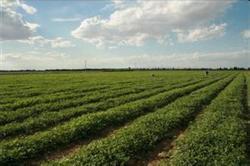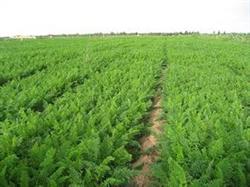Licorice field management

The time seedlings of 1 ~ 2 true leaves grow between the seedlings and the fixed seedlings, and the distance between the seedlings is about 5 cm. When the seedlings grow 3 ~ 4 true leaves, the distance between the seedlings is 10 house meters ~ 15 cm. Although irrigated Glycyrrhiza uralensis is a deep-rooted drought-resistant plant, it is not strong in drought resistance because of its shallow roots in the seedling stage. Therefore, after the seedlings grow to 4 true leaves, the head water should be shallowly irrigated or sprinkled, not flooded. Pay attention to keep the seedlings moist, watering times should be neither more nor too little, in order to ensure the water supply at the seedling stage. Little water is irrigated after the adult stage. From July to August, Rain Water drained water in time so that there was no stagnant water in the field and prevented rotting roots. The key to the cultivation of licorice is to protect the seedlings. Generally, the plants will not be watered after they grow up. Weeding seedlings should be cut in time after weeding, so that there are no weeds in the field. This is the key to high quality and high yield. If possible, herbicides can be closed before emergence after sowing. 2 bags of daihuanglong (20% chlorosulfuron) wettable powder per 667 square meters and 2 ~ 4 bottles of Acetochlor per 667 square meters are sprayed in the field. After emergence, the herbicide that kills monocotyledons can be sprayed to eliminate weeds. Topdressing for the first time was carried out after setting seedlings, topdressing 10 kg urea every 667 square meters and applying it in trenches. Urea was applied in the second topdressing when the seedling height was 20 cm, 15 kg per 667 square meters.
- Prev

Glycyrrhiza uralensis seedlings transplanting method
The glycyrrhizic acid contained in licorice is 200 ~ 300 times sweeter than sucrose, which is the best natural sweetener found so far. China has exported a large number of licorice and its extract to Europe, the United States and Southeast Asian countries, and it has become a major export medicinal material for earning foreign exchange. Due to the increasing consumption at home and abroad, the resources of wild licorice are becoming more and more exhausted. Therefore, to enter.
- Next

How to apply calcium magnesium phosphate fertilizer?
How to apply calcium magnesium phosphate fertilizer? Please guide that the main origin of calcium magnesium phosphate fertilizer is in China. Because of its wide source of raw materials and simple production process, it has developed rapidly in phosphate rock producing areas in southern China in recent years. The appearance of this kind of fertilizer is gray-white, black-green or brown glassy powder, and its composition is relatively complex. Ca3 (PO...)
Related
- Fuxing push coffee new agricultural production and marketing class: lack of small-scale processing plants
- Jujube rice field leisure farm deep ploughing Yilan for five years to create a space for organic food and play
- Nongyu Farm-A trial of organic papaya for brave women with advanced technology
- Four points for attention in the prevention and control of diseases and insect pests of edible fungi
- How to add nutrient solution to Edible Fungi
- Is there any good way to control edible fungus mites?
- Open Inoculation Technology of Edible Fungi
- Is there any clever way to use fertilizer for edible fungus in winter?
- What agents are used to kill the pathogens of edible fungi in the mushroom shed?
- Rapid drying of Edible Fungi

